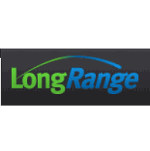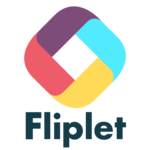Description

Frontegg

LongRange
Comprehensive Overview: Frontegg vs LongRange
Overview of Frontegg and LongRange
a) Primary Functions and Target Markets
Frontegg:
- Primary Functions: Frontegg is primarily a platform that provides scalable, user management solutions for SaaS applications. It focuses on delivering granular user authentication, including multi-factor authentication (MFA), single sign-on (SSO), and social logins. Additionally, it offers role-based access control (RBAC), user activity tracking, and API authentication. Frontegg aims to enable developers to integrate authentication and user management features into their applications quickly and efficiently.
- Target Markets: Frontegg targets software development teams, startups, and established SaaS companies that want to streamline their user management and authentication processes. It is particularly appealing to businesses that require a robust, out-of-the-box solution that can be easily integrated into existing infrastructure.
LongRange:
- Primary Functions: LongRange is a mobile app development platform designed to facilitate enterprise mobile application development. It allows businesses to build native mobile applications using RPG, COBOL, and CL without the need for traditional mobile development environments. LongRange provides features like native device access, offline data synchronization, and server-side logic execution.
- Target Markets: LongRange primarily targets industries that rely on IBM i systems, such as manufacturing, finance, and logistics. Businesses that have existing IBM i applications and seek to extend their capabilities to mobile devices find LongRange particularly useful.
b) Market Share and User Base
-
Frontegg: As of the latest available data up to 2023, Frontegg has been growing rapidly in the SaaS authentication and user management space, especially among startups and medium-sized businesses. However, it is a relatively newer player compared to some established giants like Auth0 and Okta. Therefore, while it has garnered attention and a loyal user base, it still holds a smaller market share compared to these long-standing entities.
-
LongRange: LongRange caters to a niche market that is generally smaller but well-defined. Its user base primarily consists of enterprises running IBM i systems. It doesn't compete with broader mobile development platforms like React Native or Flutter in terms of market share, but it maintains a stable presence in its specialized field due to its unique offering tailored for legacy system integration.
c) Key Differentiating Factors
-
Frontegg:
- Usability: Offers a low-code, developer-friendly environment that simplifies the integration of authentication features.
- Customization: Provides highly customizable user management and authentication features, catering to specific business needs.
- Scalability: Built to scale with growing SaaS businesses, supporting rapid user growth without compromising security.
- Focus on Security: Strong emphasis on security features, ensuring compliance with industry standards and regulations.
-
LongRange:
- Integration with IBM i: Directly supports development using IBM i's languages (RPG, COBOL, CL), making it ideal for businesses dependent on these systems.
- Minimal Learning Curve for Legacy Developers: Allows legacy code to be utilized in mobile application development, reducing the need for retraining or hiring new talent.
- Native App Capabilities: Enables building of native mobile applications with direct access to device features while maintaining server-side logic execution.
- Efficiency for Legacy Systems: Specifically optimized for integrating and extending the functionality of existing IBM i applications.
In summary, while Frontegg is a versatile SaaS solution with a focus on user management and security, LongRange serves a specialized market focused on extending IBM i systems to mobile platforms. Each product has carved out a distinct niche, with differing levels of market reach and user bases based on their unique offerings and target audiences.
Contact Info

Year founded :
2019
+1 234-567-8992
Not Available
United States
http://www.linkedin.com/company/frontegg

Year founded :
2011
Not Available
Not Available
Cyprus
http://www.linkedin.com/company/longrange-ltd-
Feature Similarity Breakdown: Frontegg, LongRange
As of the last update in October 2023, Frontegg and LongRange are both platforms designed to enhance capabilities in different domains; Frontegg primarily focuses on user management and authentication for SaaS applications, whereas LongRange is oriented towards mobile app development. Let's break down their feature similarities and differences:
a) Core Features in Common:
-
User Authentication and Management:
- Both platforms provide user authentication services, though Frontegg's focus is more comprehensive in this area, offering a wide range of features like SSO, MFA, and more.
-
Third-party Integration:
- Each provides support for integrating with other applications and services, facilitating a seamless flow of data and processes between systems.
-
Developer-friendly Offerings:
- Both offer APIs and SDKs, enabling developers to extend their applications' functionality.
b) User Interface Comparison:
-
Frontegg:
- Frontegg offers a clean and modern user interface with a strong emphasis on UX for managing user-related tasks. The UI provides intuitive navigation through various authentication settings, user management dashboards, and integration options.
- Developers find it easy to work with due to its emphasis on simplicity and well-documented processes for integrating authentication and management features.
-
LongRange:
- The LongRange platform offers a straightforward interface tailored to mobile app development. It focuses on simplifying the development process by using existing RPG, COBOL, and CL skills to build native mobile apps.
- The UI supports a drag-and-drop interface, especially useful for users transitioning from web-based to mobile development, and is designed to reduce the learning curve for developers familiar with its supported languages.
c) Unique Features:
-
Frontegg:
- Advanced User Management: Frontegg's standout feature is its advanced user management capabilities, including comprehensive admin portals and end-user dashboards.
- Identity and Security: With features like multi-factor authentication (MFA), single sign-on (SSO), and customizable authentication flows, Frontegg excels in enhancing security and flexibility for user management.
-
LongRange:
- Legacy System Support: LongRange is unique in its ability to leverage existing RPG, COBOL, and CL code, enabling businesses to create mobile apps without discarding their existing codebases.
- Native Mobile App Creation: LongRange specializes in facilitating the development of native apps across multiple platforms using familiar IBM i languages, which is distinct from Frontegg's SaaS authentication specialization.
In conclusion, while Frontegg and LongRange offer some overlapping features in terms of integration and developer support, they cater to different primary needs—Frontegg in user management and security, and LongRange in mobile app development from legacy systems. Each platform provides unique strengths that appeal to their respective target audiences.
Features

Customer Engagement
Subscription Management
User Management
Authentication

Mobile App Development
Integration
User Interface Design
Security
Best Fit Use Cases: Frontegg, LongRange
Frontegg and LongRange serve different purposes and cater to distinct business needs, which makes them suitable for different types of projects and organizations. Here’s a breakdown of their best fit use cases:
Frontegg
a) Types of businesses or projects:
- SaaS Companies: Frontegg is geared towards software-as-a-service companies looking to integrate authentication and user management functionalities rapidly and securely into their applications. It is particularly beneficial for SaaS projects that require user management, multi-tenancy support, and role-based access control.
- Startups and Scale-ups: These entities benefit from Frontegg's capabilities as it allows them to focus on core product development while leveraging ready-to-use, customizable authentication components.
- Enterprises Modernizing Software Suites: Larger enterprises moving their offerings to the cloud can use Frontegg to enhance security mechanisms and streamline user onboarding processes across applications.
How they cater to different industry verticals or company sizes:
- Industries with High Security Needs: Healthcare, finance, and education sectors that require strict user authentication measures can leverage Frontegg’s robust security features.
- Small to Medium Enterprises (SMEs): SMEs can use Frontegg to reduce development time and ensure security compliance without investing heavily in custom-built user management systems.
LongRange
b) Scenarios where LongRange is the preferred option:
- Traditional Businesses with Legacy Systems: Companies with existing IBM i (AS/400) systems that seek to modernize and mobile-enable their applications benefit greatly from LongRange. It allows businesses to extend their system functionalities to mobile platforms without extensive redevelopment.
- Industries with Heavy Use of IBM i Systems: Manufacturing, logistics, and supply chain sectors often rely on IBM systems for their operations, making LongRange ideal for creating mobile applications that interact with these systems.
- In-House IT Departments with Limited Mobile Expertise: Organizations with internal IT teams lacking mobile development expertise can use LongRange for rapid deployment of mobile capabilities that complement their core systems.
How they cater to different industry verticals or company sizes:
- Mid-sized to Large Enterprises: Particularly those in sectors like utilities, retail, and distribution where IBM i systems are predominant, these enterprises can leverage LongRange to modernize infrastructure without significant disruptions.
- Industry-Specific Applications: Companies with niche market requirements that rely on existing systems for operations can use LongRange to bridge the gap between legacy systems and modern device interfaces efficiently.
In summary, Frontegg is best suited for modern SaaS initiatives that require scalable user management and security features out-of-the-box, while LongRange is perfect for businesses looking to extend existing IBM i systems to mobile devices, preserving legacy investments while innovating with current technologies. Each caters to its specific target industries with unique strengths tuned for their most common use-scenarios.
Pricing

Pricing Not Available

Pricing Not Available
Metrics History
Metrics History
Comparing teamSize across companies
Conclusion & Final Verdict: Frontegg vs LongRange
To provide a conclusion and final verdict on Frontegg and LongRange, it’s important to assess both products based on their value propositions, strengths, weaknesses, and their appeal to different user needs.
a) Best Overall Value:
Frontegg offers a compelling overall value proposition due to its extensive range of features geared towards providing seamless and efficient user management and authentication capabilities. It is particularly well-suited for developers and companies looking for an all-in-one solution that simplifies the integration of user management features into their applications.
LongRange, on the other hand, is optimized for companies seeking mobile application development and deployment solutions that leverage existing infrastructure and skills, particularly centered around IBM i systems.
Considering all factors, Frontegg generally offers the best overall value for companies focused on modern applications with complex user management requirements. It provides more comprehensive and flexible tools for user authentication, authorization, and management that are crucial for scalable applications.
b) Pros and Cons:
Frontegg:
- Pros:
- Comprehensive suite of user management features (e.g., SSO, MFA).
- Easy integration with modern tech stacks.
- Scalable and supports a variety of use cases.
- Good documentation and developer support.
- Cons:
- May offer more functionalities than required for very simple applications.
- Could be more expensive compared to lighter solutions for minimal user management needs.
LongRange:
-
Pros:
- Excellent for IBM i systems integration.
- Simplifies the creation of mobile applications using existing RPG and COBOL code.
- Reduces the learning curve for developers familiar with IBM systems.
-
Cons:
- Limited appeal for businesses not utilizing IBM i systems.
- Potentially restrictive for developers looking to employ modern, cross-platform technologies.
c) Recommendations:
When deciding between Frontegg and LongRange, potential users need to consider the core focus and infrastructure of their projects:
-
Choose Frontegg if your primary need is advanced user management for modern web and mobile applications. It is especially beneficial if your application requires robust security features or if you anticipate rapid scaling.
-
Choose LongRange if you are an enterprise heavily invested in IBM i systems and looking to extend existing programs to mobile platforms with minimal migration or learning efforts.
Ultimately, the choice between Frontegg and LongRange should be guided by the specific technological ecosystem and business requirements each user faces. Companies should also consider future scalability and the evolving needs of their user base when making their decision.
Add to compare
Add similar companies




